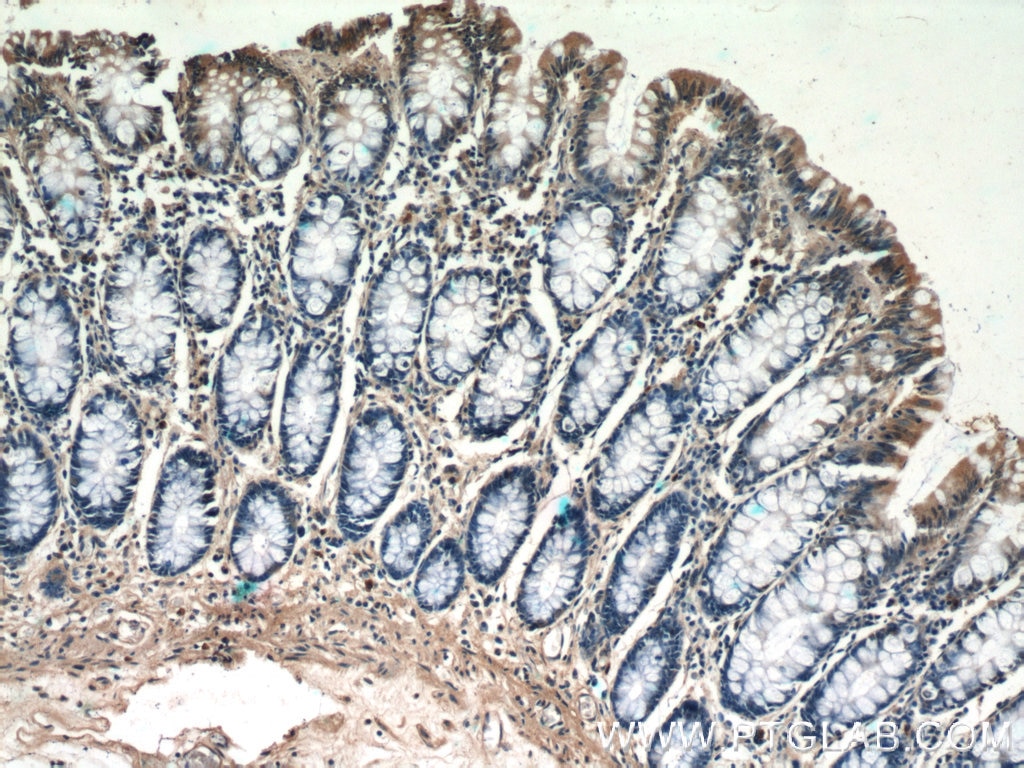Anticorps Polyclonal de lapin anti-humanin
humanin Polyclonal Antibody for IHC,ELISA
Hôte / Isotype
Lapin / IgG
Réactivité testée
Humain
Applications
IHC,ELISA
Conjugaison
Non conjugué
N° de cat : 25885-1-AP
Synonymes
Galerie de données de validation
Applications testées
| Résultats positifs en IHC | tissu d'intestin grêle humain, tissu cardiaque humain il est suggéré de démasquer l'antigène avec un tampon de TE buffer pH 9.0; (*) À défaut, 'le démasquage de l'antigène peut être 'effectué avec un tampon citrate pH 6,0. |
Dilution recommandée
| Application | Dilution |
|---|---|
| Immunohistochimie (IHC) | IHC : 1:20-1:200 |
| It is recommended that this reagent should be titrated in each testing system to obtain optimal results. | |
| Sample-dependent, check data in validation data gallery | |
Informations sur le produit
25885-1-AP cible humanin dans les applications de IHC,ELISA et montre une réactivité avec des échantillons Humain
| Réactivité | Humain |
| Hôte / Isotype | Lapin / IgG |
| Clonalité | Polyclonal |
| Type | Anticorps |
| Immunogène | Peptide |
| Nom complet | l-rRNA |
| Numéro d’acquisition GenBank | NC_012920 |
| Symbole du gène | RNR2 |
| Identification du gène (NCBI) | 4550 |
| Conjugaison | Non conjugué |
| Forme | Liquide |
| Méthode de purification | Purification par affinité contre l'antigène |
| Tampon de stockage | PBS avec azoture de sodium à 0,02 % et glycérol à 50 % pH 7,3 |
| Conditions de stockage | Stocker à -20°C. Stable pendant un an après l'expédition. L'aliquotage n'est pas nécessaire pour le stockage à -20oC Les 20ul contiennent 0,1% de BSA. |
Informations générales
Humanin, also named as MT-RNR2, is a mitochondrial peptide. It plays a role as a neuroprotective factor. It protects against death induced by multiple different familial Alzheimer disease genes and beta amyloid proteins in Alzheimer disease. Humanin reduces the aggregation and fibrillary formation by suppressing the effect of APP on mononuclear phagocytes and acts by competitively inhibiting the access of FPRL1 to APP.
Protocole
| Product Specific Protocols | |
|---|---|
| IHC protocol for humanin antibody 25885-1-AP | Download protocol |
| Standard Protocols | |
|---|---|
| Click here to view our Standard Protocols |







